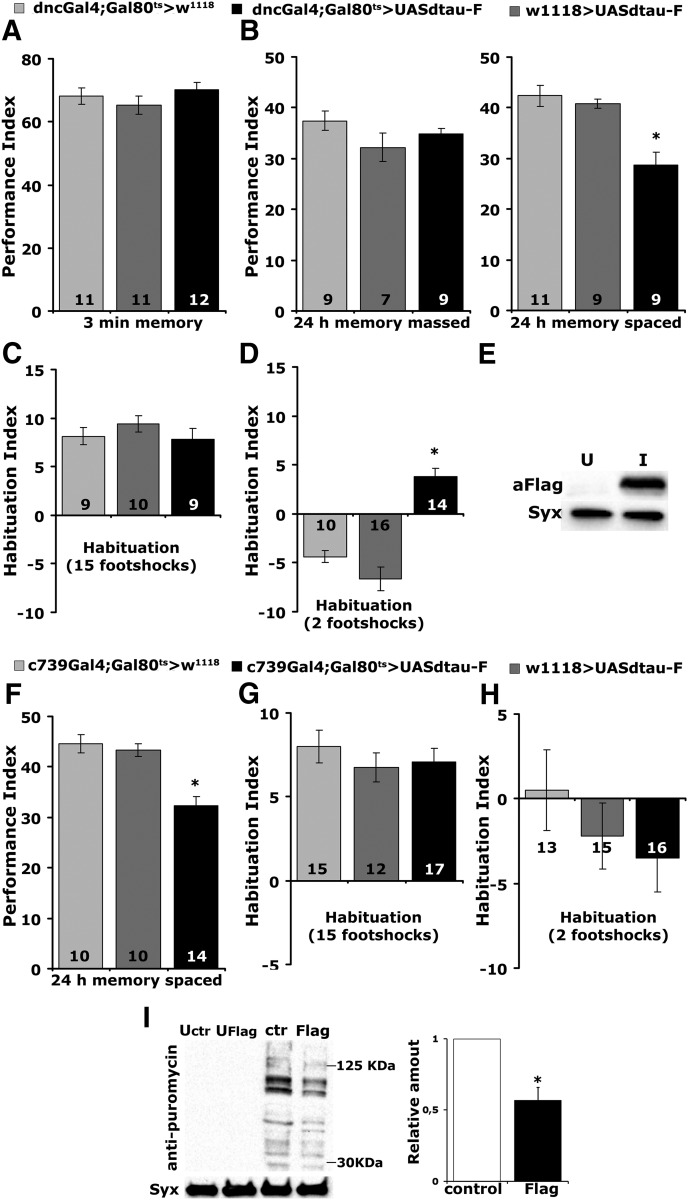Figure 6.
dTau elevation within the adult MBs leads to premature habituation and LTM deficits with a concomitant decrease in protein synthesis levels. A, A–D, Adult-specific expression of UAS-Flag dTau within the MBs under dnc-Gal4 results (A), normal 3 min memory (B), normal ARM after massed training but LTM deficits after spaced training (*p < 0.0001), normal habituation following 15-stimulus training (C), and premature habituation (*p < 0.0001) following 2-stimulus training (D). The number of experimental replicates (n) is indicated within the bars. E, Representative Western blot demonstrating accumulation of Flag-dTau in adult MBs using LeoMB-Gal4;TubG80ts of animals raised at 18°C and shifted to 30°C for 2 d (I), while uninduced animals (U) were kept at 18°C for these 2 d. dTau was revealed with an anti-Flag antibody. Syntaxin (Syx) was used as a loading control. F–H, Adult-specific expression of UAS-Flag dTau within αβ neurons under c739 yields significant LTM deficits (*p < 0.0001) compared with controls (F), and results in normal habituation following 15-stimuli (G) or 2-stimuli (H) training. The number of experimental replicates (n) is indicated within the bars. I, Representative Western blot of head lysates from flies expressing UAS-Flag-dTau using Elav-Gal4;TubG80ts and probed with anti-puromycin antibody. Animals were raised at 18°C and shifted to 30°C for 3 d, while uninduced animals (U) were kept at 18°C for these 3 d. The genotype of control animals was Elav-Gal4;Gal80ts/+. Flies were treated with 600 μm puromycin for 16 h. For the quantification, levels of the signal corresponding to molecular weight region 30–125 kDa were normalized using the Syx loading control and are shown as a ratio of their mean ± SEM values relative to their respective level in control flies, which is arbitrarily set to 1. The star indicates significant differences (p = 0.0026) from control (open bar), indicative of decreased protein synthesis upon dTau loss.

